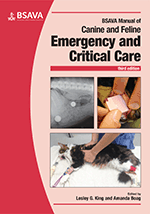
Full text loading...

Imaging techniques should be used with care in critically ill patients. It is important to keep the number of procedures to a minimum by selecting appropriate techniques, and to carry out each examination carefully to minimize the need for repeat examinations. This chapter provides guidance on the use of survey radiography, contrast radiography, ultrasonography, computed tomography and magnetic resonance imaging.
Imaging techniques for the critical patient, Page 1 of 1
< Previous page | Next page > /docserver/preview/fulltext/10.22233/9781910443262/9781910443262.24-1.gif

Full text loading...





























































